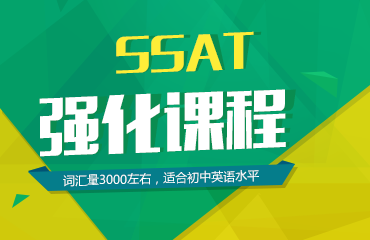10月12日的雅思阅读考题回顾已经放出来了,那么在以下文章中,北京朗阁小编就为大家带来2019年10月12日雅思阅读考题回顾,请看以下内容:
10月12日的雅思阅读考题回顾已经放出来了,那么在以下文章中,北京朗阁小编就为大家带来2019年10月12日雅思阅读考题回顾,请看以下内容:
|
考试日期 |
2019年10月12日 |
|
Reading Passage 1 |
|
|
Title |
Italian Opera |
|
Question types |
Summary Completion TRUE/FALSE/NOT GIVEN |
|
文章内容回顾 |
介绍了澳大利亚的戏剧 |
|
题型难度分析 |
题目较难定位,文章难度偏大 |
|
剑桥雅思推荐原文练习 |
剑9 Test 4 Passage 1 |
|
Reading Passage 2 |
|
|
Title |
Australian Forest |
|
Question types |
Matching Headings Multiple Choice Sentence Completion |
|
文章内容回顾 |
主要讲述了澳大利亚人为火烧森林的作用 |
|
相关英文原文阅读 |
Australia's unique forests provide a sustainable resource base for the forestry sector. Australian, state and territory vernments share an objective of balancing the needs of industry with the sustainable management of forests by integrating environmental, commercial and community values and uses.
The Australian vernment works with the state and territory vernments (which have primary responsibility for forest management) and the forest industries in developing national forest policy.
This partnership approach between the levels of vernments and the industry is reflected through national initiatives such as the 1992 National Forest Policy Statement and the Plantations for Australia: the 2020 Vision.
Following on from the National Forest Policy Statement, Australia has developed, implemented and reviewed Regional Forest Agreements (RFAs) to achieve a balance between conservation and production in native forests, and provide security for the industry.
With a strong policy framework in place, vernment and industry continue to address issues affecting the profitability and sustainability of Australia's forest industries. In 2018–19, the forest industry generated $23.9 billion of sales and service income and employed around 52,000 people.
Further information on Australia’s forests and forest industry is published by the Australian Bureau of Agricultural and Resource Economics and Sciences (ABARES) in Australia's State of the Forests Report 2018 and at ABARES Forest Australia webpage.
Bioenergy is energy derived from organic material (biomass). Bioenergy can be used for power generation (such as electricity) and heat applications in all energy sectors including domestic, commercial and industrial purposes, and in the production of liquid fuels for transport.
Currently Australia’s bioenergy use for generating heat and electricity is sourced mainly from bagasse (sugar cane residue), wood waste and the capture of gas from landfill and sewage facilities. The wood waste is from forest residues and wood related waste products from saw mill residue (woodchips and sawdust) and pulp mill residue (black liquor and wet wastes).
The vernment is aware that, to be beneficial to the environment and society, the production of biofuels and, critically, the feedstock used, must be sustainable. Using wood residues to produce bioenergy requires sustainable forest management to maintain environmental integrity. For this reason, the Australian and state and territory vernments have put in place comprehensive frameworks to ensure that environmentally responsible forestry underpins the use of wood residues for bioenergy.
Bioenergy Australia is a vernment—industry forum to foster and facilitate the development of biomass for energy, liquid fuels, and other value added bio–based products. Bioenergy Australia is concerned with all aspects of biomass and bioenergy, from production through to utilisation and has a number of technical publications where additional information can be found.
The Australian vernment’s price on carbon will encourage the use of woody biomass as an energy source. The use of biomass for electricity generation or heat energy will not attract any liability under a carbon price. This means that generators that use biomass, including from wood wastes, will become more cost competitive relative to generators that use fossil fuels, which will be subject to the carbon price.
There is potential to expand Australia’s bioenergy sector to increase the use of wood residues from forest operations for electricity and heat generation and transport biofuel production. |
|
题型难度分析 |
有较难的标题配,本篇文章难度较大。 |
|
题型技巧分析 |
段落标题配对是雅思考试中比较难的题型 对于段落标题配,可以采取以下步骤: 1. 若时间充裕,则精读各段首句,略读其余部分,甚至可直接精读篇幅较小的整段。 2. 若时间不充裕,则研究选项标题,看有无明显的定位或排除,如含有明显的定位词、相似选项等。 |
|
剑桥雅思推荐原文练习 |
剑6 Test 1 Passage 3 |
|
Reading Passage 3 |
|
|
Title |
Research on Human Brain |
|
Question types |
Multiple Choice Matching Information |
|
文章内容回顾 |
主要讲述了对于人脑的研究 |
|
题型难度分析 |
有难度很大的信息配对,且文章本身难度也较大,本文难度偏大。 |
|
题型技巧分析 |
单选题做题步骤: (1)找出题干中的关键词,好先定位到原文中的一个段落,有时候题目中会直接标出在哪个段落,因此注意要注意审题。 (2)从头到尾*阅读该段落,根据题干中的其他关键词及选项确定正确答案。 (3)有些题目比较简单,可以直接选择。有些题目比较难,看每个选项都有点像,但又都不太像。这时,可以用排除法,先排除掉肯定不对的选项,然后在剩下的选项中再做出选择。 (4)要注意顺序性,即题目的顺序和题目对应原文的顺序基本一致。 |
|
剑桥雅思推荐原文练习 |
剑5 Test 1 Passage 2 |
|
考试趋势分析和备考指导: 这次考试涉及到了较多的配对题,尤其是较难的段落标题配对题和段落信息配对题,而目前考试中,要么有信息配对,要么有标题配对,或者两种题型都有,因此考生在备考的时候应该多注意练习配对题。同时,判断题的出题频率仍然很高,且题量较大,对于这种主流题型,考生在备考的时候应该尽量*准确率,避免丢分。再就是本次考试的文章难度较大,考生需要在平时刻意练习一下精读能力。 |
|




